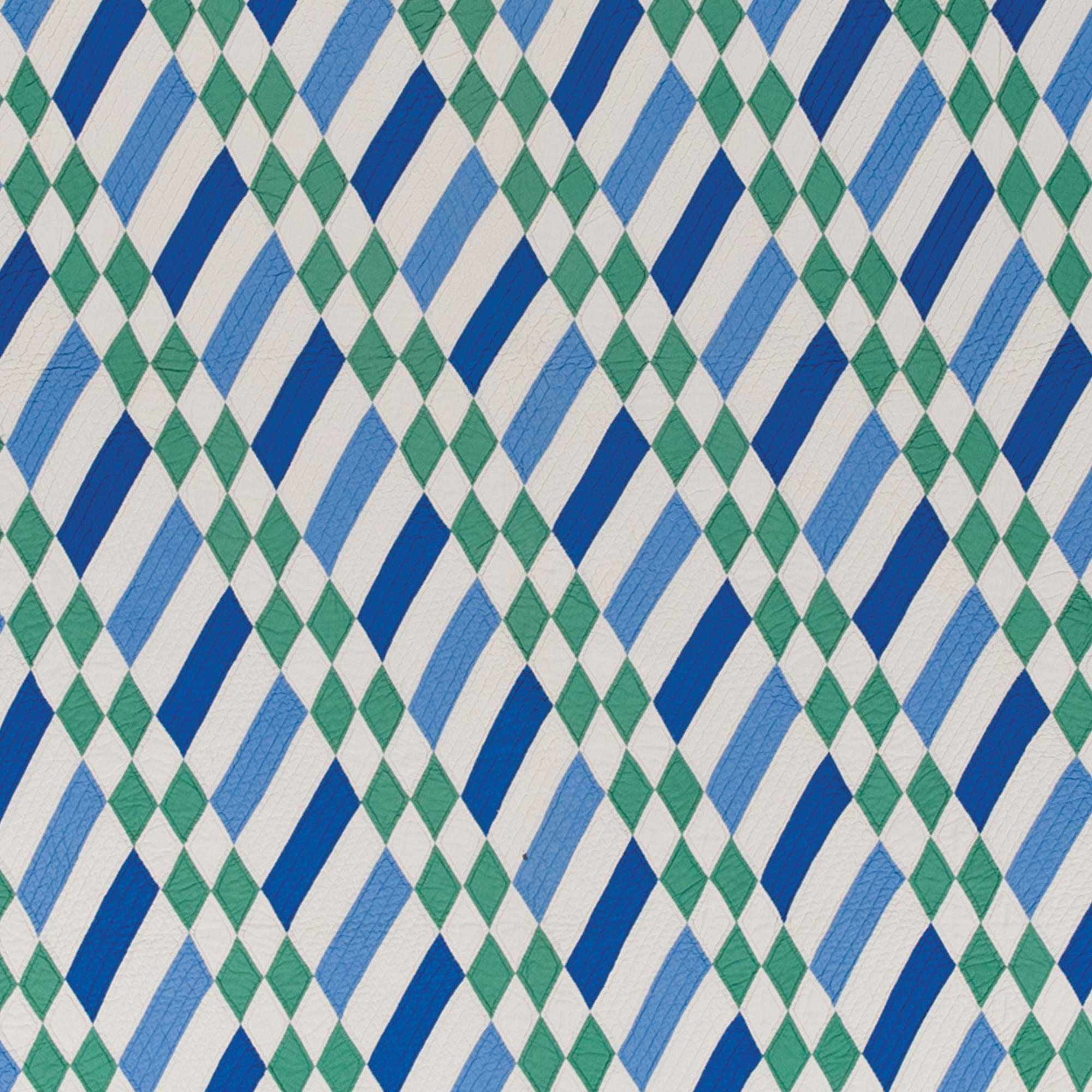“We shall emphasize the fact that ours … is the exact copy of a very old quilt.”
Sales manager Frederick J. “Fritz” Hooker traveled for weeks at a time throughout Kentucky and Tennessee and in the southern parts of Illinois and Indiana. He interviewed “old-time” quiltmakers and photographed or purchased their quilts. Patterns from some of these quilts were offered inside Mountain Mist batting wrappers beginning in 1929. However, the company’s designers took liberties in order to align them with standard batting dimensions and assigned new names to old favorites.
“The best way to make friends with the quiltmaker, and at the same time attract newcomers to this fascinating needlework, [is] to offer patterns of exceptional and artistic design, with complete and easily understood directions and at moderate prices.” –Frederick J. Hooker, 1945
This was Frederick J. “Fritz” Hooker’s marketing strategy to increase sales of Mountain Mist batting. Before publishing a quilt pattern, he asked experienced quiltmakers to test the instructions and give their opinion of the design. Consequently, patterns offered by Mountain Mist are some of the most popular designs of the twentieth century.
Hooker’s marketing plan also included educating retailers on ways to increase sales through store displays, quilts shows, and demonstrations. The company made extensive use of magazine advertisements, too. Hooker’s concepts were so successful the company continued to print patterns on batting wrappers into the 1990s.
Hooker hired Margaret Hays, an art teacher from Chattanooga, Tennessee, in 1929 for $200 per month to draw patterns from old quilts, choose color schemes, and write instructions. In just six months Hays developed 21 Mountain Mist patterns, including two original designs she submitted.
“You can of course still get information about the Mountain Mist patterns by writing here, as the name I bequeathed … still holds.” –Phoebe Edwards, 1938
Phoebe Edwards Lloyd began work as Hooker’s assistant in 1929. She tracked pattern sales, wrote articles about quilting, and worked closely with the professional quilters who made the sample quilts and provided pattern designs. She also helped develop nearly 50 Mountain Mist quilt patterns. After she left the company in 1938, a series of company employees used the name Phoebe Edwards into the 1990s in correspondence with quiltmakers and as authors of Mountain Mist publications.
A professional quiltmaker made a quilt from each Mountain Mist pattern, though these women were not acknowledged when the quilts were shown in department stores or quilts shows. As one who took every opportunity to promote his product, Hooker featured some of these women in magazine advertisements as professionals who endorsed Mountain Mist batting. Were it not for these advertisements, we might not know the names of these women.

